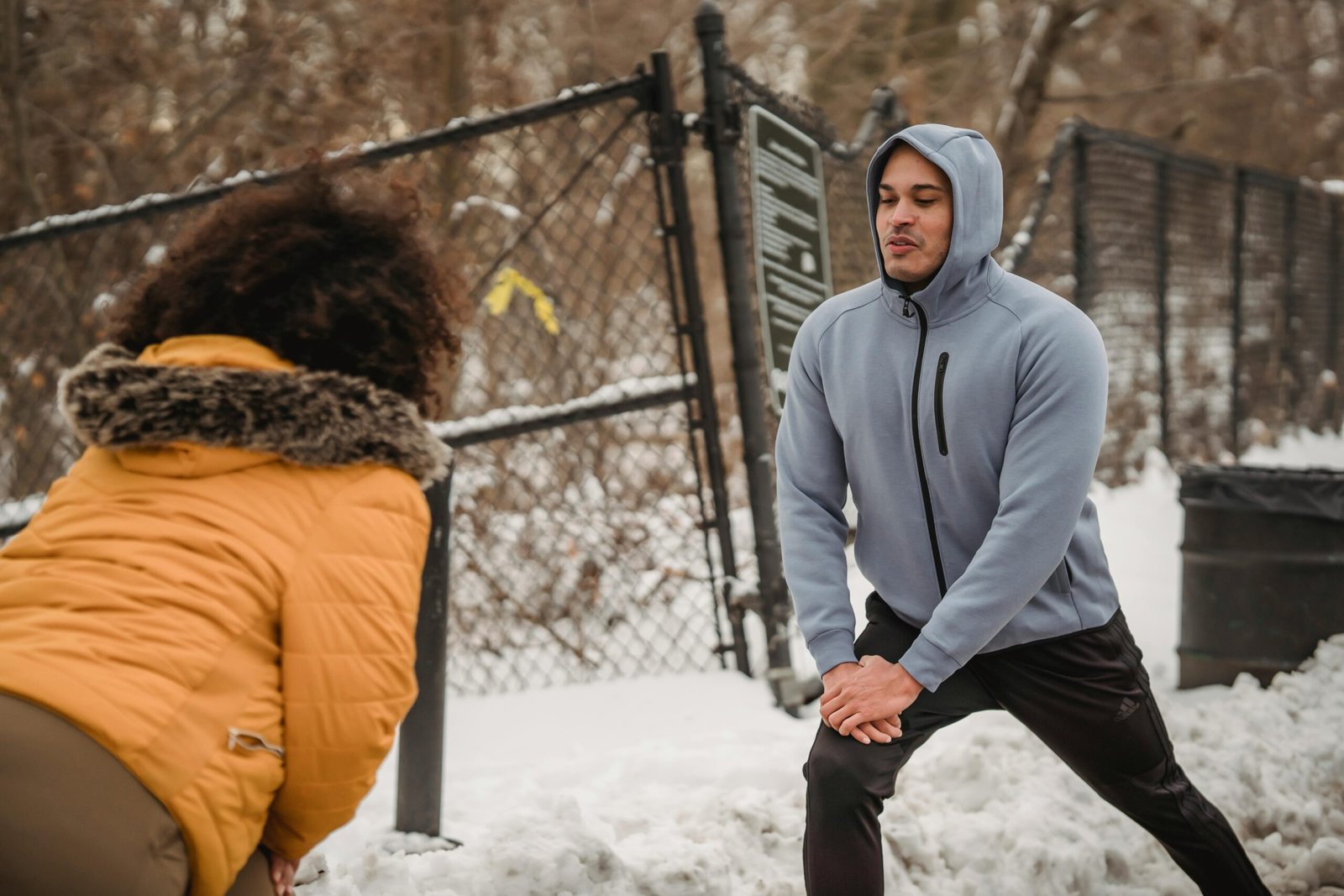Winter brings cozy blankets, hot cocoa, and shorter days—but it also makes staying active a challenge. When the temperature drops and daylight fades, motivation often follows. Yet, maintaining an exercise routine during winter is crucial for physical health, mental well-being, and fighting seasonal blues like Seasonal Affective Disorder (SAD).
This guide offers actionable strategies to keep you moving, energized, and motivated even when the weather is frightful.

Exercise in winter isn’t just about maintaining fitness—it’s a powerful tool to:
Boost mood by releasing endorphins, combating winter blues.
Strengthen immunity, reducing cold and flu risks.
Improve sleep by regulating your circadian rhythm.
Burn more calories as your body works harder to stay warm.
Despite these benefits, the season’s challenges—cold temps, less sunlight, and cozy inertia—can derail even the most disciplined routines. Here’s how to stay on track.
If your summer routine feels impossible in winter, adjust it! Swap outdoor runs for indoor cycling, try yoga, or shorten sessions. Even 10 minutes of movement counts 29.
Exercise when energy peaks—whether at lunch (to catch daylight) or evenings. If mornings feel brutal, skip the 5 AM alarm and opt for afternoon workouts.
Lay out workout clothes, pack your gym bag, or pre-load a fitness app. Reducing friction makes it easier to start.
For outdoor workouts, layer up:
Base layer: Moisture-wicking fabric (avoid cotton).
Mid-layer: Insulation (fleece or wool).
Outer layer: Windproof/waterproof jacket.
Don’t forget gloves, a hat, and grippy shoes for icy paths.
Combat SAD with a light therapy lamp for 20–30 minutes daily to boost energy and mood.
Even on cloudy days, a 10-minute walk outside can uplift your mood and regulate sleep hormones.
Accountability works! Partner with a friend for virtual or in-person sessions—you’re less likely to cancel.
Embrace winter sports (ice skating, skiing) or indoor classes (dance, HIIT) to keep things exciting.
Celebrate small wins—a post-workout herbal tea, a new playlist, or a relaxing bath.
Winter is a natural time to slow down. If motivation dips, focus on maintenance over peak performance. Rest is productive too.
Indoor yoga (reduces stress and warms muscles).
Home strength training (use bodyweight or resistance bands).
Treadmill or stationary bike (cardio without the chill).
Dance workouts (energize with music).
Winter hikes (explore snowy trails safely).
Swimming (warm pools for low-impact cardio).
Pilates (improves core strength and flexibility).
Virtual fitness challenges (join online communities).
Lunchtime walks (maximize daylight).
Cross-country skiing (full-body workout in nature).
Cold muscles are prone to injury. Spend 5–10 minutes doing dynamic stretches or jumping jacks inside before braving the cold.
Winter workouts don’t have to be grueling. By adapting your routine, creating a supportive environment, and focusing on joy, you can stay active—and even thrive—until spring returns.